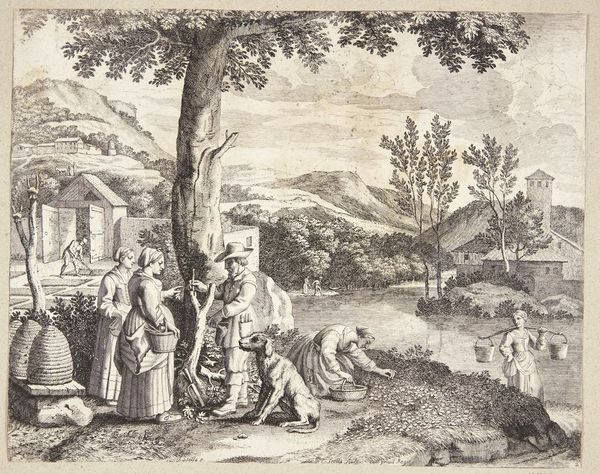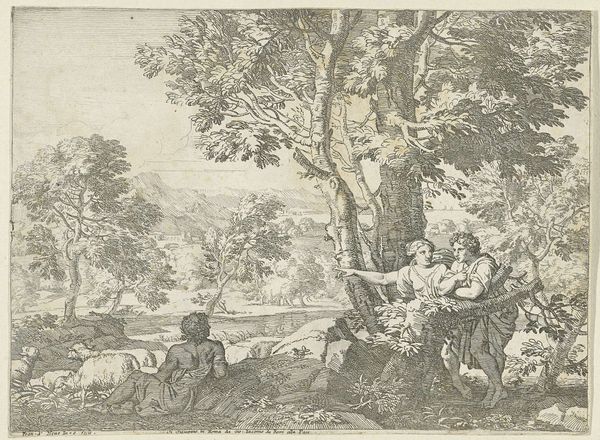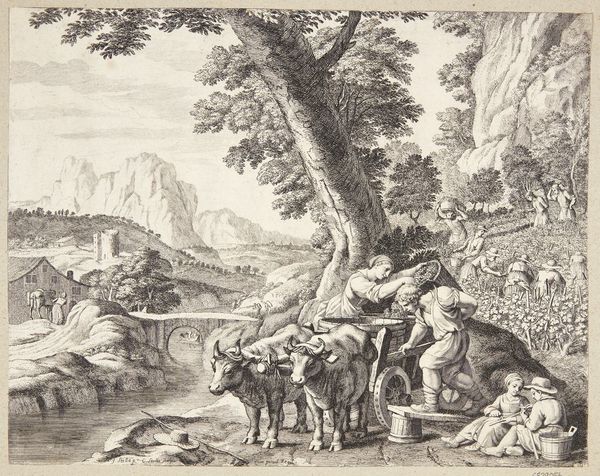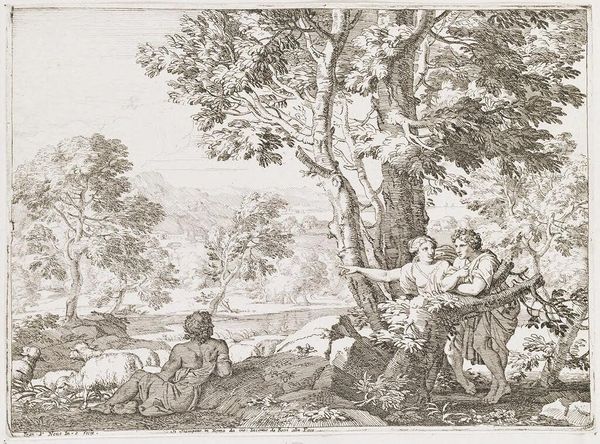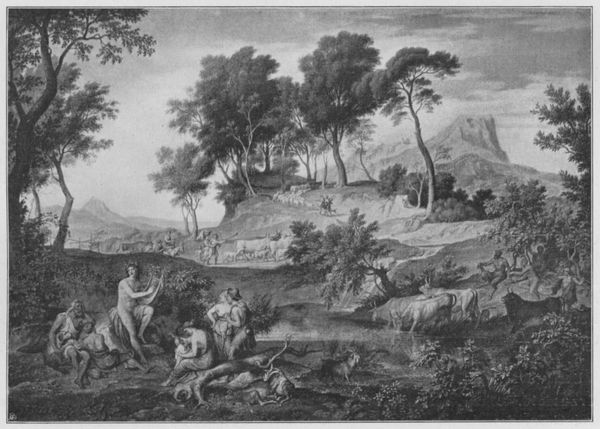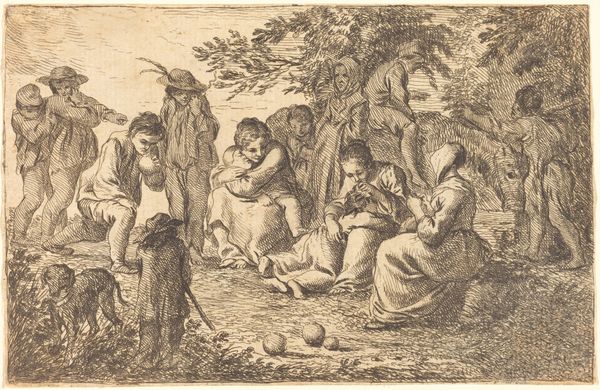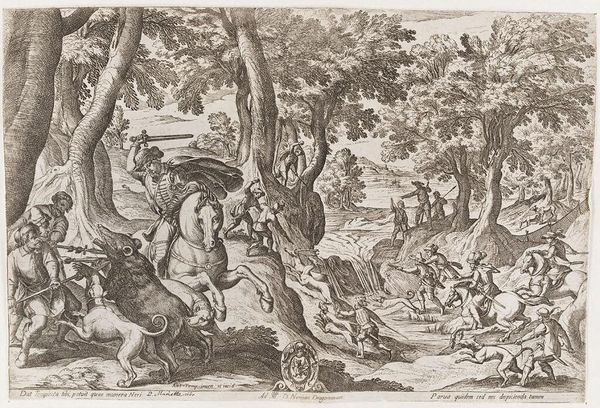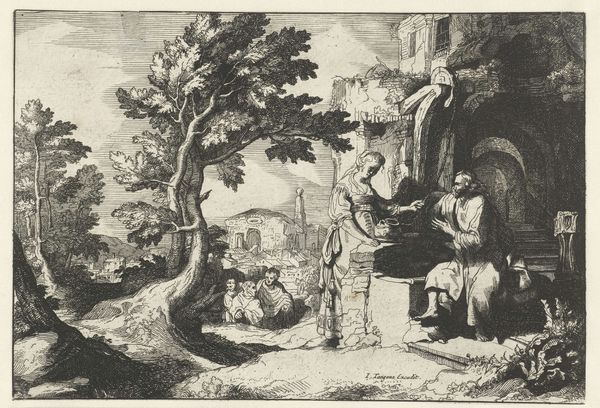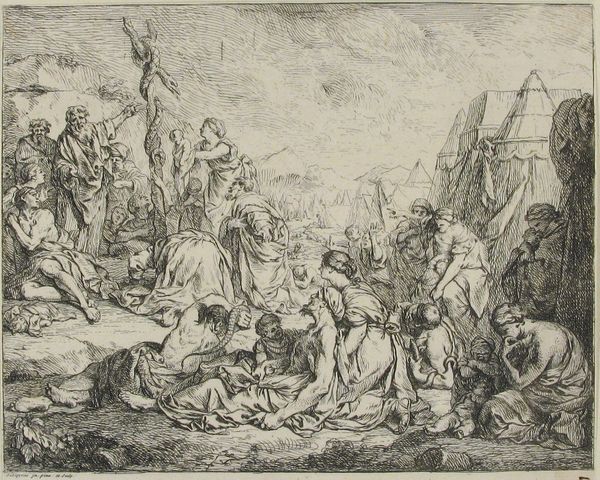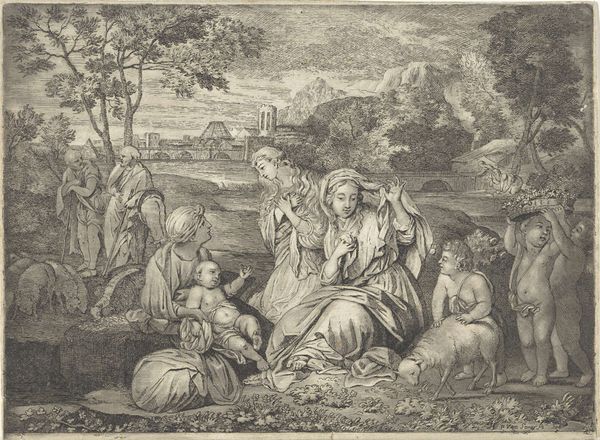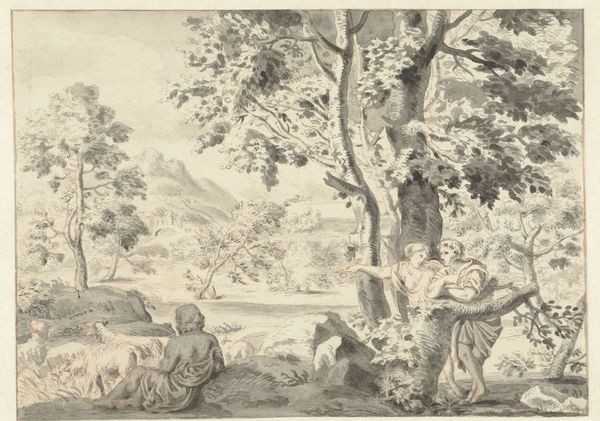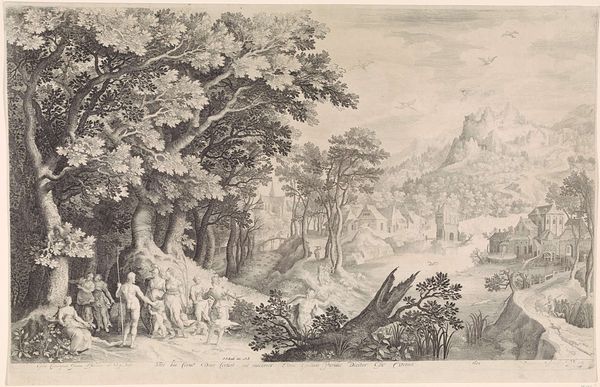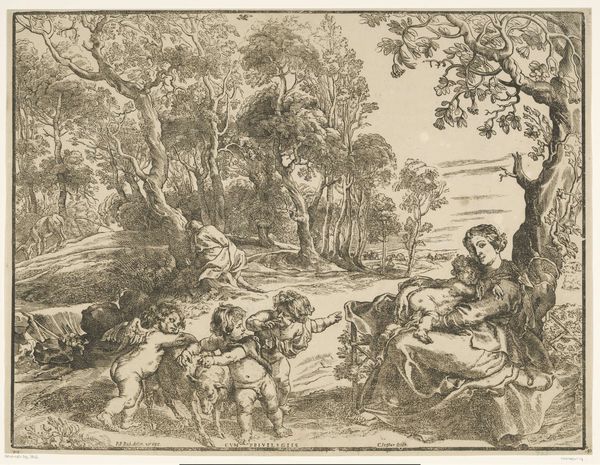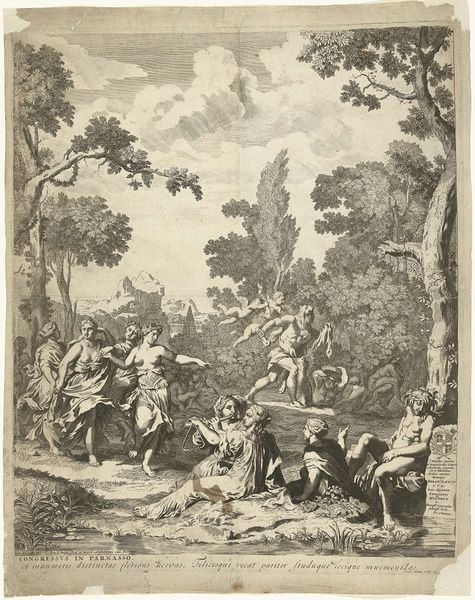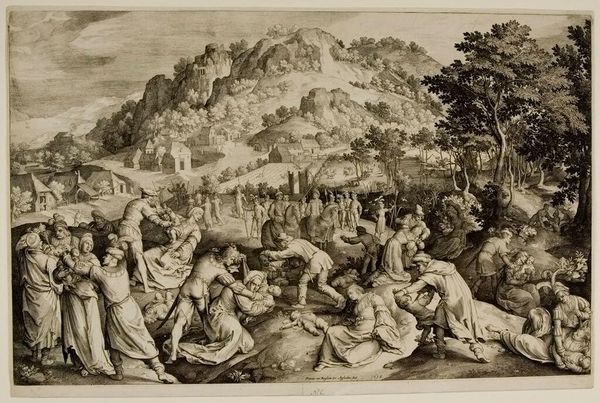
painting, oil-paint
#
narrative-art
#
baroque
#
painting
#
oil-paint
#
landscape
#
figuration
#
oil painting
#
history-painting
#
realism
Copyright: Public Domain: Artvee
Curator: This is "Laban Searching for his Stolen Household Gods" by Bartolomé Esteban Murillo, painted between 1665 and 1670. Murillo, of course, was a leading artist of the Spanish Baroque. Editor: My first impression? It's incredibly busy. The composition feels almost theatrical, with so many figures populating this broad, panoramic space. Curator: Precisely! This depicts a scene from the Book of Genesis, where Laban confronts his son-in-law Jacob, accusing him of stealing his household gods, or teraphim. It is worth noting that these were objects often associated with domestic power and lineage. Editor: I'm drawn to the central figures: Laban and Jacob locked in what looks like a very heated discussion. Murillo masterfully uses their gestures and positioning to create a sense of confrontation. The fabric, the drapes - all the materials here, bring texture to the scene. Curator: Yes, and note the women clustered around the tent, particularly Rachel concealing the idols she stole by sitting on them. It highlights the complicated roles women played within patriarchal structures. The teraphim, as symbols of power, being literally hidden by a woman... It speaks volumes about covert resistance. Editor: I see that. It is visually compelling how Murillo distributes light throughout the canvas, guiding our eyes to key figures. It is masterful how he articulates the tension without cluttering up his artistic style. Curator: The surrounding landscape isn’t mere background, it functions as a crucial element contextualizing the nomadic lives and familial dynamics being represented. I consider this narrative deeply entrenched in the themes of inheritance, power, and the struggle between tradition and change that are constantly at play. Editor: The landscape in question provides such subtle dynamism. Note the mountains contrasted with a stream of running water. He does manage to imbue so many narrative elements into the composition itself, it really is something. Curator: Ultimately, the painting presents an intimate window into the dynamics of identity, family, and cultural inheritance, particularly concerning the subjugated and underrepresented parties in the narrative. Editor: I concur. Through his artistic technique, Murillo constructs a landscape not merely for viewing but also for critical and introspective engagement. Thank you for helping unpack some of this rich symbolism.
Comments
No comments
Be the first to comment and join the conversation on the ultimate creative platform.
